Making Mathematics has been a really fun experience for me this semester! Being able to express my interests creatively has been a new and freeing experience for me that I haven’t gotten from other classes. I enjoyed working without constraints and being able to genuinely pursue interests that made me excited!
PenRose🌹 tiling
For Project 0A, I worked with Margaret and Nora to create a Penrose tiling using flowers and leaves. Penrose tilings are aperiodic tilings that use two different tiles: a 108° rhombus and a 144° rhombus. We decided to collect pink flowers from Scripps and green leaves from Platt to create the tiling. We used the laser cutter to create a template for the rhombus’ we needed to cut. We then dried the flowers and leaves in between books, and used an exacto knife to cut them into the shapes using the template.


This was what we ended up creating! For Project 0B, we continued to add to the tiling and expanded it!
Surface Minimizing Bubbles🫧
For Project 0B, Mathus taught me how to use soap bubbles to find the minimal surface area of the shape created. We used Zometools to create these. I initially started with a cube, then began creating some other cool shapes. I thought that this project was super cool! It was neat to learn how the bubble takes the simplest shape possible, which minimizes surface tension and area.

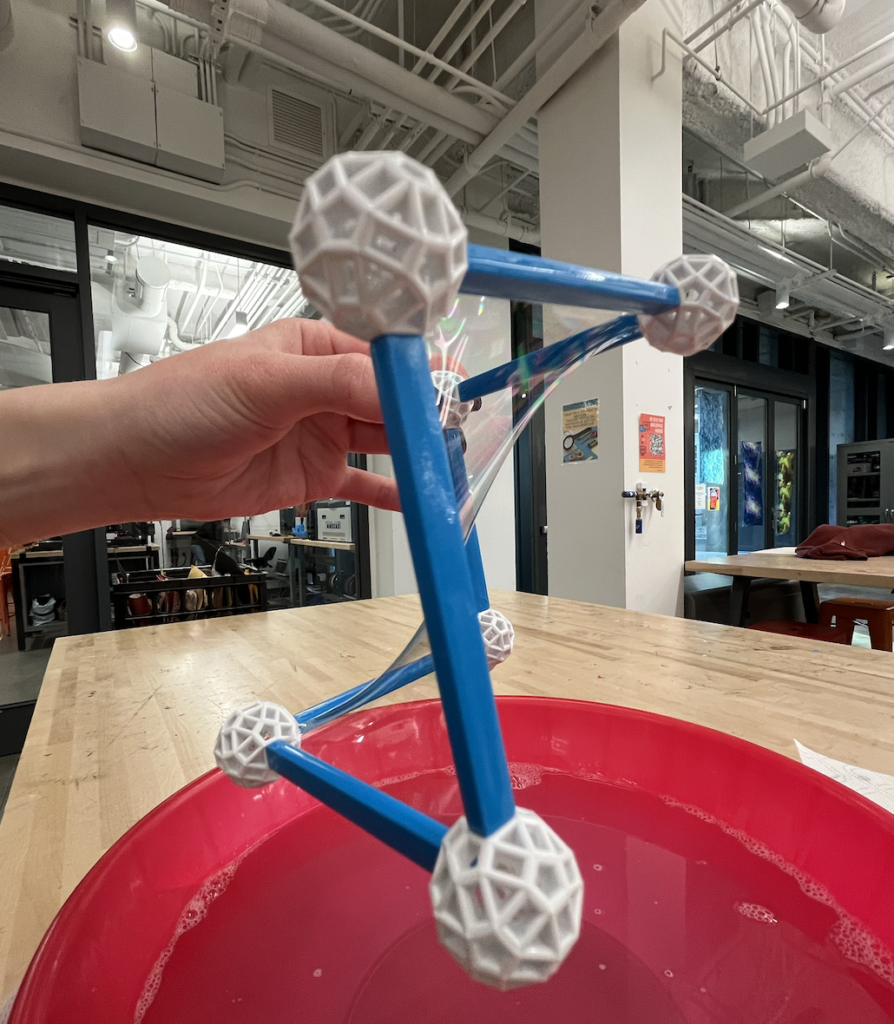

Math-Themed Card Deck🃏
For Project 1, I created a deck of math-themed cards and a box with Kishore. We started by using Inkscape to create the SVGs for our cards. This was my first time using Inkscape, so it took a little adjusting but I eventually got the hang of commands. We decided to look for sets of 13 things to represent each suit.
Spades — isohedrally-tiled hexagons

clubs — cubic distance-regular graphs

hearts — archimedean solids

diamonds — books of euclid’s elements

We decided to make the Joker cards related to two’s. We used the Penrose and Ammann-Beenker tilings since they’re both aperiodic tilings that use 2 tiles to create their tesselations. We put the Julia Set on the back of the cards, using TensorFlow to create the fractal. We created the box in the woodshop, which was also my first time using the tablesaw. This was our final box with the cards inside.
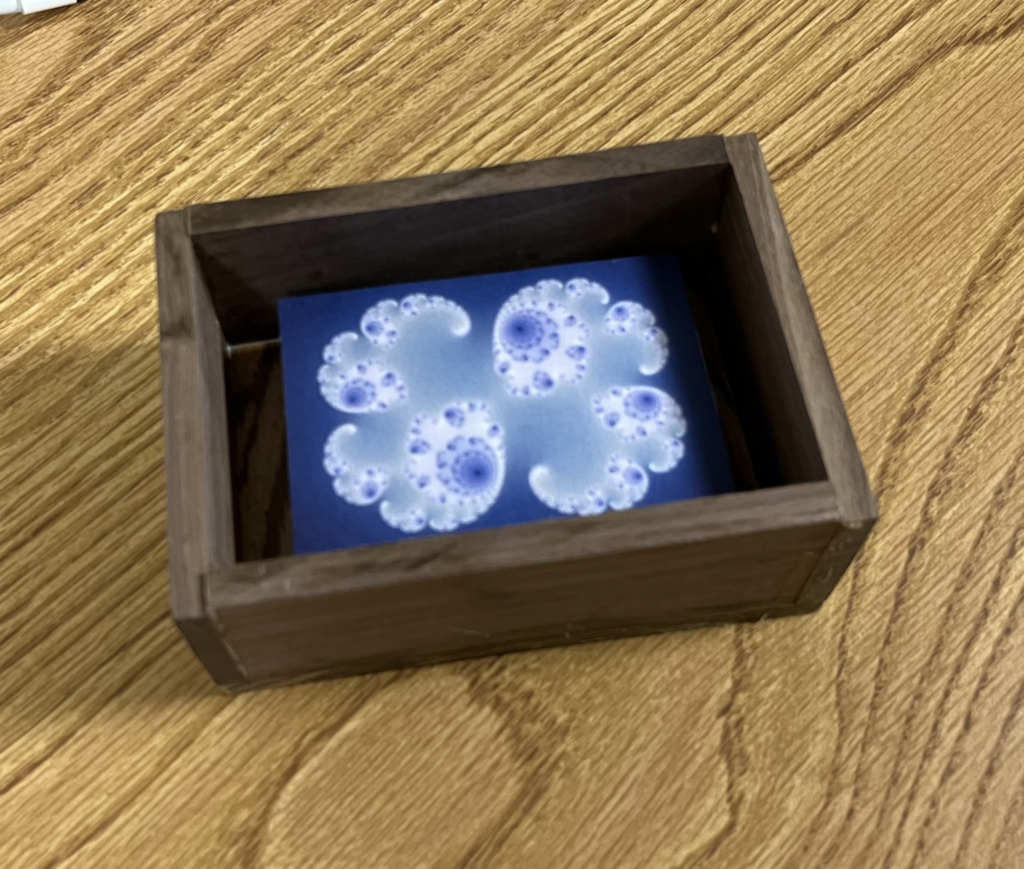
We’re excited to get the real printouts of the cards next semester!
Fibonacci Mosaic Tilings
For Project 2, Delaney and I created the f4 and f5 tilings using mosaics! We laid out all the possible tilings for length n=4 and n=5 on separate boards. We wanted the tiling for the f5 board to look like a “5”, and for the f4 board, we decided to keep it simple and in the typical ordered layout. We used the darker grey tiles to represent squares and the white tiles to represent dominoes.
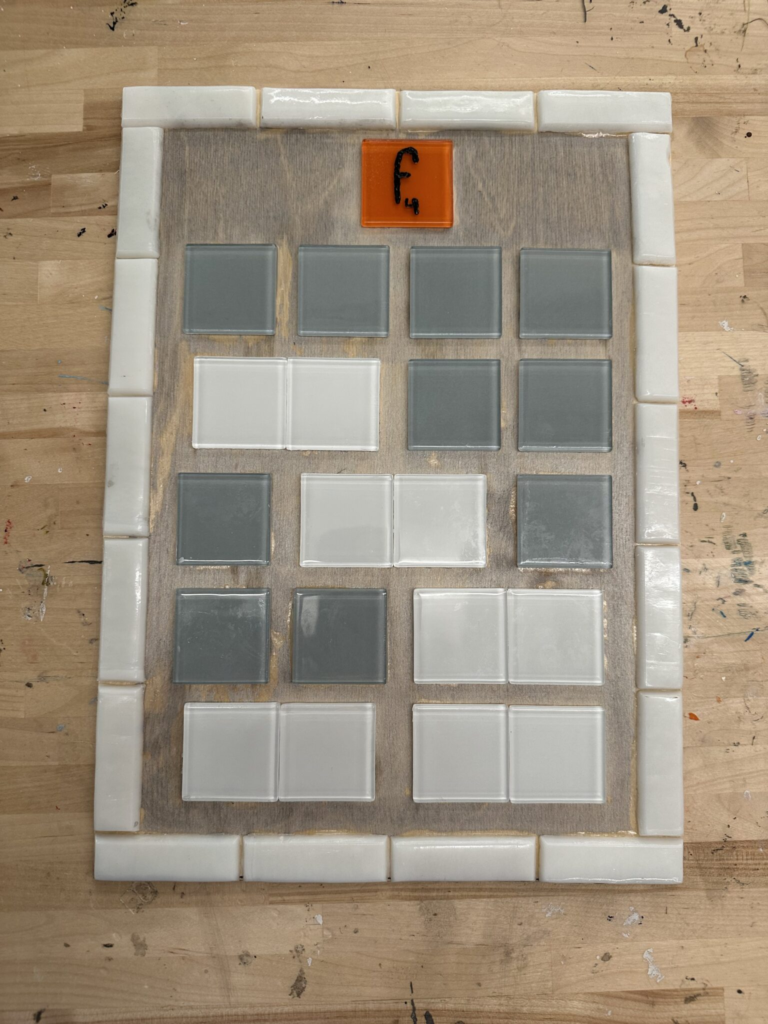
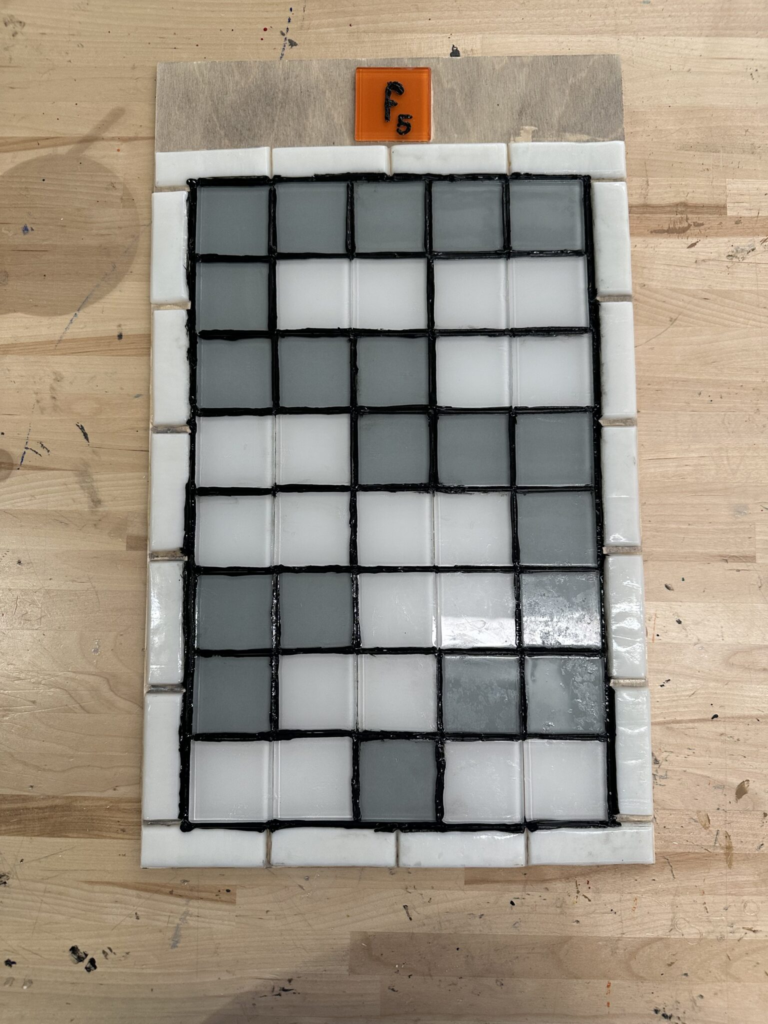
Parametric Curve Posters
For Project 3, I created visually-aesthetic posters of parametric curves with Vicente. We started by creating SVGs using Python. The Python script took in a parametric function for the x and y parameters, then scaled the values to fit the desired canvas size and created line elements between the points of the parametric curve at small intervals. Each of the line segments was colored using the colour Python library. We then designed the posters using Figma.
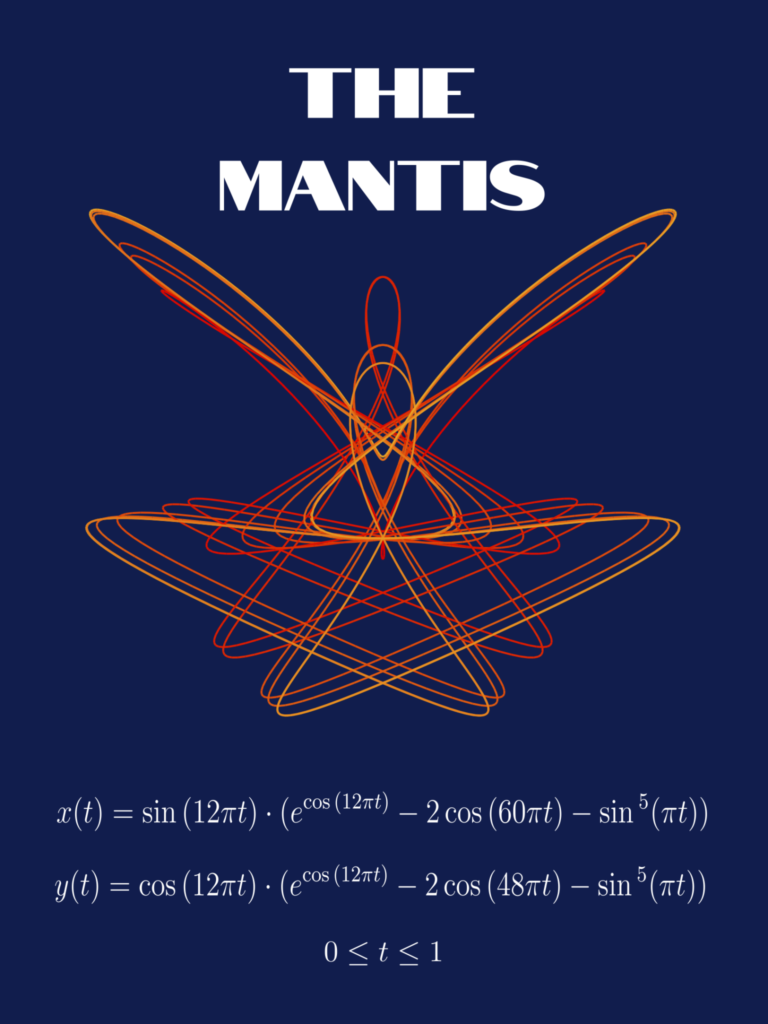
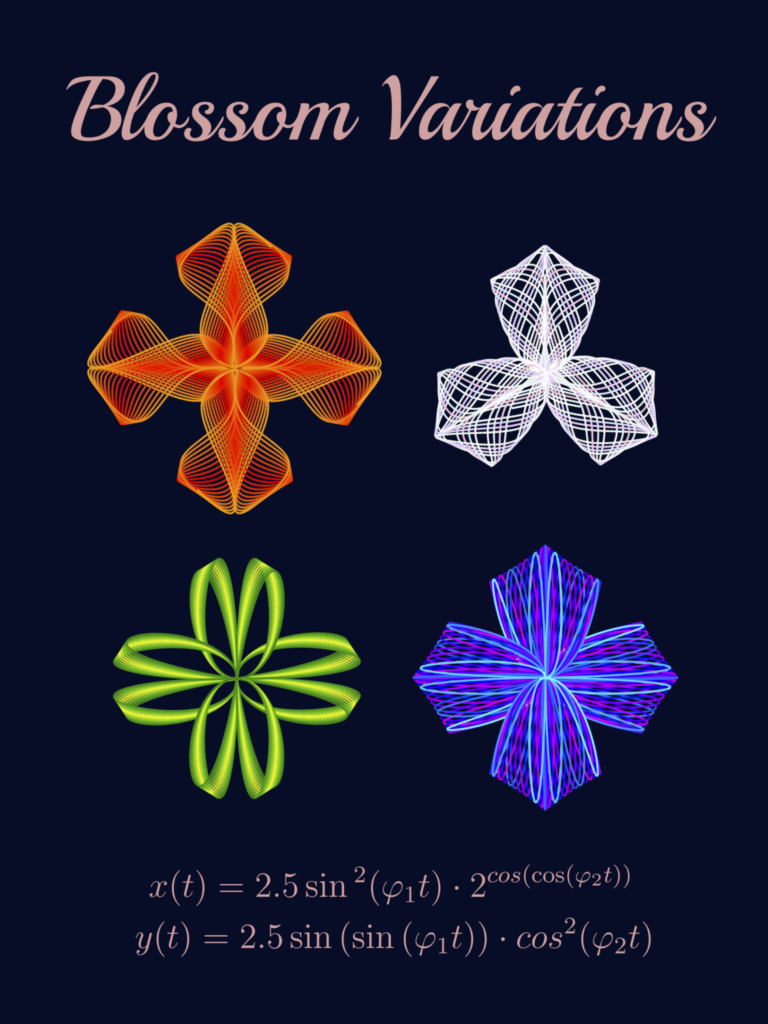
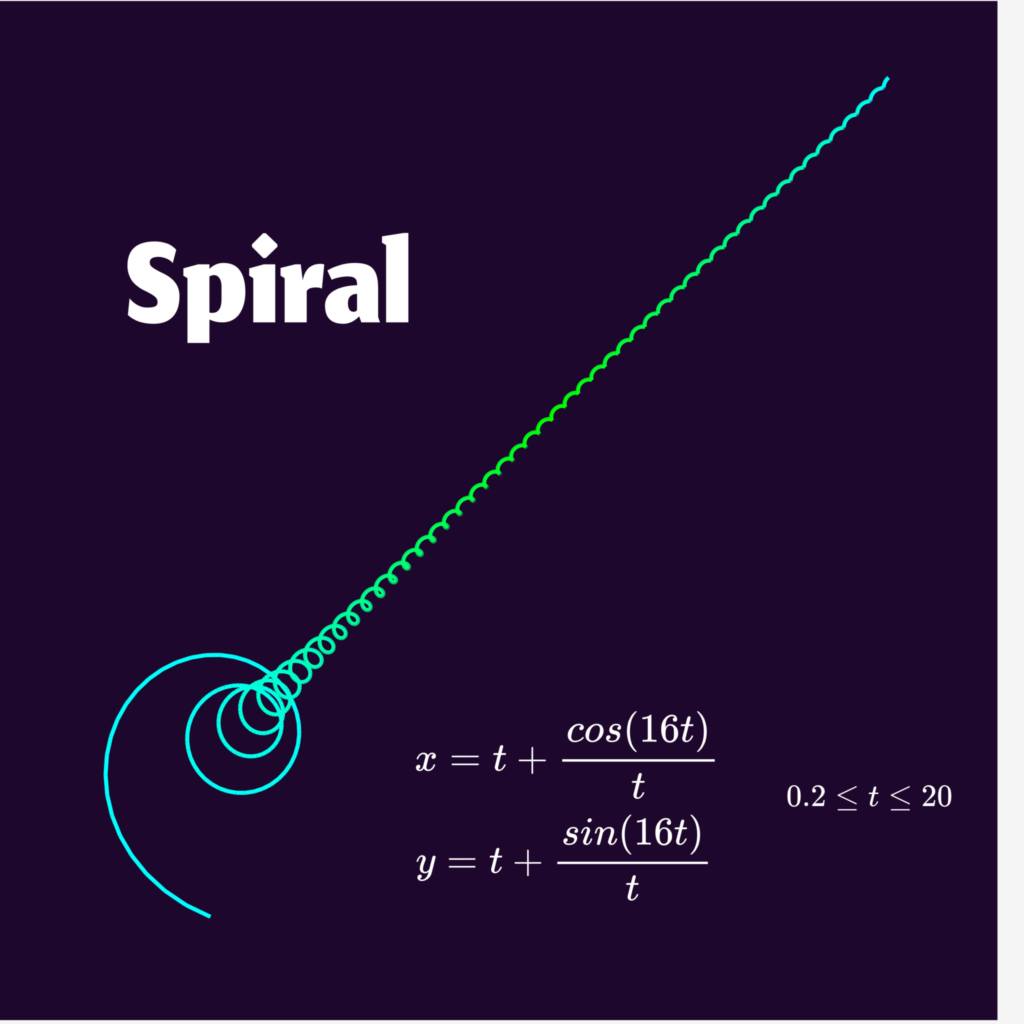
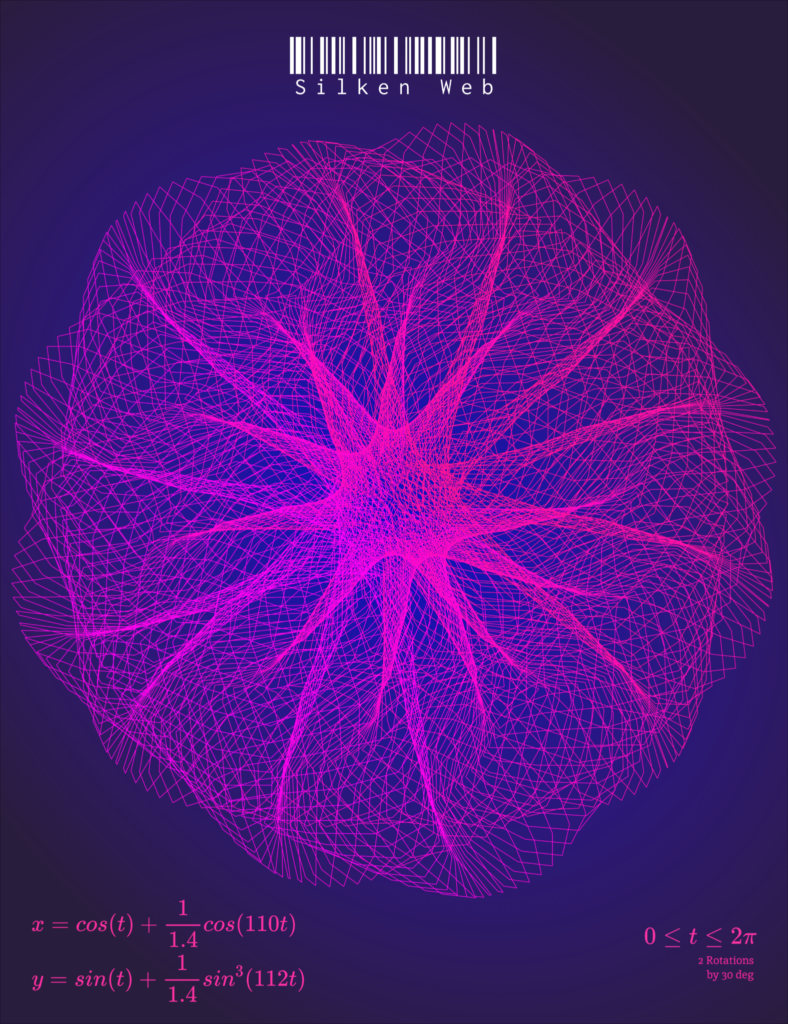

Reflection
Overall, I’ve had a lot of fun with all the projects I was able to create in Making Math! I was able to use the woodshop and table saw for the first time, as well as learn new software such as Inkscape and Figma. I really enjoyed learning about new math concepts using new technologies. I’m glad that I took this class relatively early into my college career, since I’ll definitely now be using the Makerspace, Machine Shop, Hive, etc. a lot more throughout the 2 years I have left at HMC.
I’m still really interested in learning how to use the 3D printer in the Makerspace, and thought that a lot of the puzzle projects created by other people were really cool — So I think that’s my next step after this class!
Leave a Reply